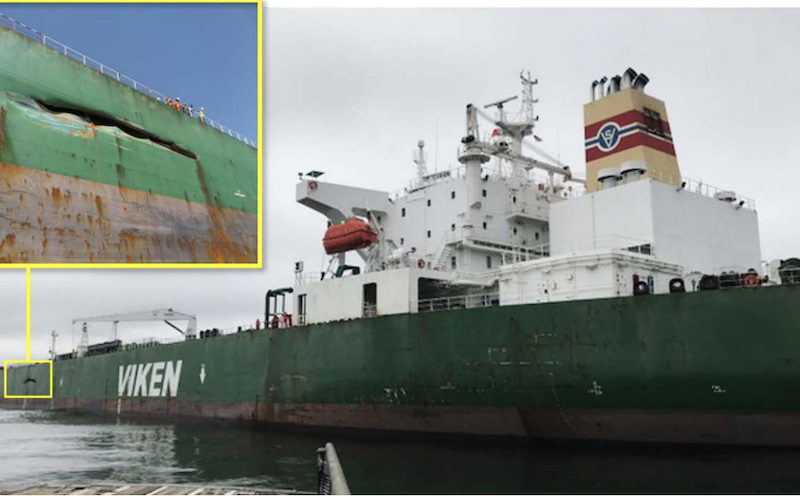The following is text from the National Transportation Safety Board (NTSB) accident report:
On May 12, 2018, about 1913 local time, the fishing vessel Polaris transiting with a crew of 7 and the tanker Tofteviken with a crew of 25 collided about 30 miles south of Montauk, Long Island, New York, during daylight and good visibility. There were no reports of pollution or injuries. Both vessels sustained hull damage amounting to $716,047.
The Polaris, a 91-foot-long, steel-hulled commercial fishing vessel with a single propeller and rudder, was flagged in the United States. Owned by O’Hara Corporation of Rockland, Maine, the vessel was being used in the scallop fishery. It was fitted with two control stations in the pilothouse: one facing forward, which contained the radar displays; the other facing aft, equipped with the automatic identification system (AIS). According to the captain of the Polaris, on the day of the accident there were no problems with the vessel’s hull, machinery, or navigation equipment.
The fishing vessel was en route to its home port of New Bedford, Massachusetts. The Bahamian-flagged Tofteviken was an 820-foot-long, double-hulled oil tanker with a single propeller and rudder. It was owned by Viken Shipping AS, managed by Wallem Ship Management Ltd., and classified by the American Bureau of Shipping. There were no conditions of class related to the vessel’s hull, machinery, or navigation and communication equipment. Carrying a partial load of crude oil, the Tofteviken was on a voyage from Point Tupper, Nova Scotia, Canada, to an oil refinery in Linden, New Jersey. The tanker departed Nova Scotia at 1130 on May 10, anticipating a May 13 arrival at Ambrose Anchorage near New York City.
At 1907 on the day of the accident, the distance between the Tofteviken and Polaris had decreased to 1.8 miles, with no change in the bearing between both vessels. While the distance between the vessels continued to decrease, the third mate and the AB were standing at the centerline compass repeater close to the forward windows of the bridge. The master and second mate were also on the bridge working at a computer on the starboard side. About 3 minutes later, the distance between the Tofteviken and Polaris decreased further, to about 0.8 miles, with no change in bearing between both vessels.
The chief engineer, who was also on the bridge to see the master, walked around from where the master and second mate were located to look out of the windows forward. From there, he noticed the Polaris at close range on the port bow and shouted to the third mate, “What are you doing?” Upon hearing the chief engineer, the master stood up from the computer, went forward where he saw the Polaris, and immediately ordered hand steering and hard to starboard. He also directed the second officer to sound the ship’s whistle. Playback of the Tofteviken’s ECDIS indicated a heading change to starboard beginning at 1912. Seconds later, at 1913 the two vessels collided.
Probable Cause: The National Transportation Safety Board determines that the probable cause of the collision between the fishing vessel Polaris and the tanker Tofteviken was the failure to maintain a proper lookout by the mate on the fishing vessel and the failure to identify the risk of collision by the third mate on the tanker.
Click here to report the NTSB marine accident brief.

